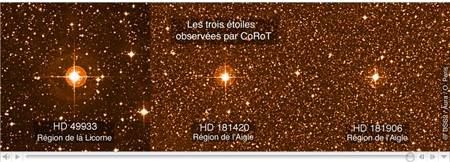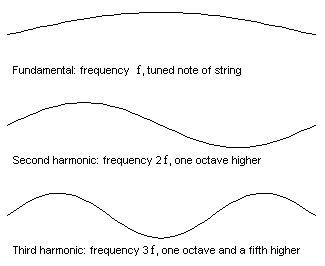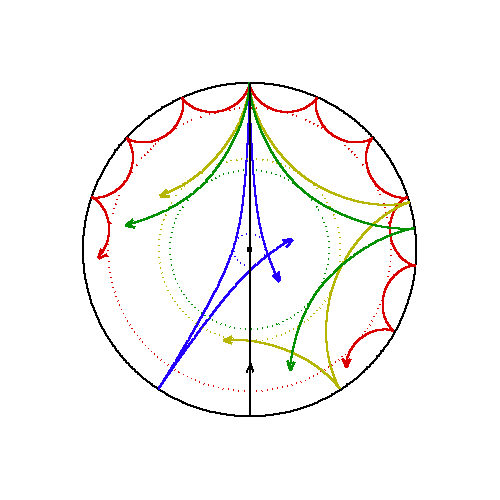There are three new singing stars on the block, but you're unlikely to hear them on Radio 1. The musical talents of HD49933, HD181420 and HD181906, three nearby stars which are hotter and larger than our Sun, were discovered by a group of scientists, led by Eric Michel, using data from the CoRoT space-based telescope. Michel and his colleagues accurately measured accoustic vibrations in these stars that not only make for eerie listening, but also could reveal important information about how all stars evolve.

Click to watch a movie of the stellar songs of the three stars HD49933,
HD181420, HD181906, transposed by 18 octaves to the human audio range
[Video courtesy of Observatoire de Paris-LESIA/Eric Michel/
Institut d'Astrophysique de Paris/ Jean Mouette]
Scientists have been listening to our own Sun since the 1970s when research into helioseismology began. Just as seismology (the study of how waves caused by earthquakes move though the planet) has revealed important information about the structure of the Earth, helioseismology uses the vibrations of the Sun to understand the solar interior. Stars are giant balls of gas held together in a delicate balance of gravity pulling the gas in, and the nuclear energy created in the star's centre pushing the gas out. This energy is transmitted through the star by radiation in the inner layer, and convection (like heating a pot of water on the stove) in the outer layer. Some of the energy leaves the sun in the form of light, but some is reflected from the surface back into the stellar interior. These reflected energy waves cause the convective layer to vibrate, and helioseismologists observing the oscillations of the surface of the star can understand how the waves are moving through the star's interior.

The first few vibrations modes of a vibrating string
When most of us think of sound waves we might visualise the waveforms created by plucking a guitar string. A standing wave is created when the initial wave is reflected off the fixed ends of the string: some points on the string will appear unmoved by the standing wave (called the nodes), while the rest of the string vibrates between these points in the familar shape of a sine-function. Standing waves can occur in different modes corresponding to the resonant frequencies of the vibrating object.
Standing waves also occur in two dimensions, when vibrations move over a surface. The movie below uses grains of rice resting on a sheet of paper on a speaker to show how the modes of vibration change as the freqency of the sound changes — the rice is pushed away from the oscillating regions towards the nodes. Just as the sine function describes standing waves in one dimension, Bessel functions describe the modes of vibration in two dimensions.
Describing vibrations in three dimensions is trickier, and requires the use of spherical harmonics. Astroseismologists can only see the waves' vibrations on the surface of the star: some areas oscillating, while other areas remaining unmoved (the nodes). It is thought that stars, like our Sun, can have many modes of vibration, each resulting from a different reflecting path through the stars interior. As waves are affected by the composition of the medium they are travelling through, each vibration mode represents a different sample of the star's interior.

Ray paths of different acoustic waves inside the Sun. The ray paths are bent as the speed of sound increases with depth, due to the increasing temperature [Image from Solar Oscillations Investigation at Stanford Solar Observatories Group].
The Sun has millions of observable modes, and so a detailed model has been built of its internal structure. But noone has been sure that this model is applicable to stars other than the Sun. The first big step in astroseismology came with the detection of the stellar heartbeat of Alpha Centauri A (reported in Plus in 2002), a nearby star that has very similar characterstics to the Sun. But there had been little major progress until space-based telescopes such as CoRoT became available, which allow for more accurate data to be measured over much longer periods.
Michel and his colleagues used over 60 days' worth of data from CoRoT for HD49933 and 156 days of data for HD181420 and HD181906 (compared with 5 days of data used to detect oscillations for Alpha Centauri A). They confirmed that these stars, which are heavier and hotter than the Sun, also exhibit the same stellar oscillations. What's more, they were able to accurately measure the amplitude of the oscillations and found that, while still larger than those of the Sun, they were 25% smaller than predicted by stellar models.
The songs of these stars, along with the many more yet to be heard by space-telescopes such as CoRoT and the soon to be launched Kepler, will improve our understanding of the structure of stars, and how these engines of the Universe evolve. And ultimately this may lead to a better understanding of how we came to be here. The early Universe only contained hydrogen and helium, all the elements necessary for life, such as oxygen, nitrogen and carbon, have been produced by the fusion reactions inside stars. So not only are we made of star dust (as the saying goes), but perhaps by listening to the songs of the stars we might find out just how that dust was made.
Further reading
- Plus has many articles on maths and music, in particular The music of the primes and Why is the violin so hard to play can tell you more about sound waves and resonance.
- You can also read more about astroseismology and helioseismology on Plus in Stellar heartbeats and The dynamic sun.